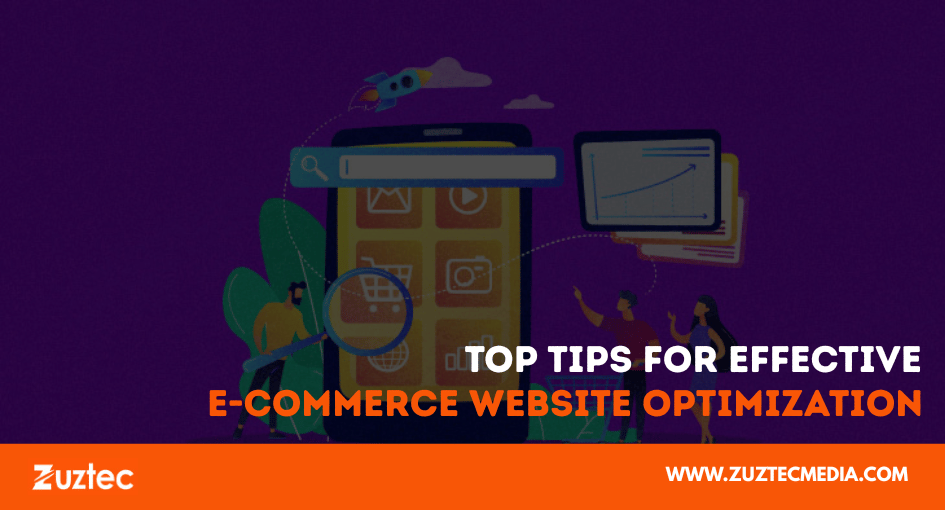
Top Tips For Effective E-Commerce Website Optimization
In today’s highly competitive online market, simply launching an e-commerce store is not enough. Businesses must continuously improve how their websites perform to meet customer expectations and drive conversions. This is where e-commerce website optimization becomes essential. It’s not just about flashy visuals—it’s about performance, usability, content quality, and mobile responsiveness.
Visitors today expect fast load times, simple navigation, and intuitive shopping experiences. Users are likely to abandon a page that takes longer than a few seconds to load. Your site will be both aesthetically pleasing and functional thanks to optimization efforts. Your time on site, bounce rate, and eventually sales are all directly impacted by this.
Another essential component of optimization is search engine visibility. Websites that prioritize user experience, speed, and keyword optimization typically rank higher on search engines like Google. More traffic and potential clients are correlated with higher rankings.
Mobile-friendliness plays a large role as well. With a growing number of shoppers using mobile devices, having a responsive design is no longer optional. E-commerce sites must deliver seamless experiences across all screen sizes.
Whether you’re improving speed, enhancing user experience, or refining SEO, e-commerce web optimization is an ongoing process. Done right, it creates a better shopping experience and builds lasting trust with customers. The sections below explore how to effectively implement these strategies and make your online store truly stand out.
Key Elements Of E-Commerce Website Optimization
Compressing images, reducing unnecessary scripts, and using efficient hosting can help your pages load faster. Every second matters, especially when potential customers are ready to make a purchase.
Navigation is another essential aspect. Your website should have a clean, logical structure that makes it easy for users to find products. A search bar with auto-suggestions and well-organized categories can greatly improve the browsing experience.
Clear call-to-action buttons, mobile-friendly layouts, and easy checkout processes are also crucial. These features not only keep visitors engaged but also drive conversions.
Lastly, consider trust signals such as customer reviews, security badges, and return policies. These elements build credibility and make shoppers feel secure when buying from your site.
Enhancing User Experience Across All Devices
Your e-commerce website optimization should deliver a smooth experience whether accessed on a desktop, tablet, or smartphone. A responsive design ensures your layout adjusts based on screen size, providing optimal viewing and interaction.
Nowadays, the majority of consumers browse and buy using mobile devices. You run the risk of losing a sizable portion of your audience if your website is not responsive. On smaller screens, usability is enhanced by shorter forms, larger tap targets, and simplified menus.
Another aspect of the user experience is accessibility. Ensure that people with disabilities can easily navigate your website. This entails the use of keyboard-friendly interfaces, readable fonts, and alt text for images.
In the midbody of your optimization strategy, remember to monitor how users interact with your site. Use tools like Google Analytics or heatmaps to see where they drop off or get stuck. Making small improvements based on this data can have a big impact over time.
Content, SEO, And Conversion Rate Optimization
Both user engagement and search engine optimization depend on high-quality content. Every product page should have a distinct description that organically incorporates pertinent keywords. Keep in mind that duplicate content can lower your search engine rankings.
How-to articles, blog entries, and guides all contribute to organic traffic. Over time, this search engine-optimized content increases credibility and trust. Use internal linking to direct visitors to your products and keep them on your site longer.
Conversion rate optimization (CRO) involves A/B testing different versions of your pages to see what drives more sales. Experiment with button colors, headlines, and images to discover what works best.
Additionally, ensure that your checkout procedure is safe and easy. Offer guest checkout, cut down on steps, and give customers a variety of payment methods. Your total revenue can rise dramatically as a result of these efforts.
Conclusion: Ongoing Benefits Of Site Optimization
Consistent e-commerce website optimization can make a lasting impact on your business. It’s not a one-time task but a continuous effort that evolves with changing technology and consumer behavior. Optimized websites load faster, rank better on search engines, and offer superior user experiences that lead to more conversions. Whether you’re focusing on mobile design, improving site speed, or refining product content, every adjustment helps strengthen your brand online. Ultimately, staying proactive with optimization ensures your e-commerce site remains competitive, trustworthy, and profitable in a constantly shifting digital landscape.

